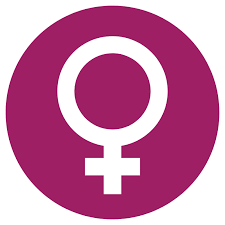We are very excited to be providing intrauterine device (IUD) insertions at Cygnet Family Practice!
These are small devices, which sit inside the uterus, and are the most effective forms of
contraception. They are also used for heavy menstrual bleeding, endometriosis pain and as part
of menopause therapy options. Overall, studies have shown them to be the most satisfactory
forms of contraception (with continuation rates of close to 90% for hormonal IUD and close to
85% for copper IUD at 1 year – Contraception CHOICE project, 2006).
There are 2 forms of IUDs available in Australia:
- Hormonal IUD: Mirena and Kyleena – progesterone only contraception
- Copper IUD: copper device
How do hormonal IUDs work?
- Mirena: contains 52mg of progesterone
- Kyleena: contains 19mg of progesterone
- Both act by thickening cervical mucous, and therefore preventing the passage of sperm and
thinning the inner lining of the uterus. Both will also act to thin the lining of the endometrium,
the inner lining of the uterus. Especially in the first 3-6 months, in some people, ovulation may
be prevented or delayed.
How do copper IUDs work?
- They change the lining of the endometrium, making it less receptive to implantation
- The also slow the passage of eggs from the ovaries, and inhibit sperm from traveling towards
the ovaries, though the exact mechanism isn’t completely understood
Benefits
- Highly effective (>99%) as contraception, inexpensive and easy to be removed
- Long lasting – working for 5-10 years
- Fertility rapidly returns to normal levels once removed
- Safe during breast feeding
- Effectiveness is not reduced by other medications, or other illness, such as vomiting
- Safe options for people who are unable to take oestrogen-containing contraception
- Hormonal IUDs in many people will reduce the amount of menstrual flow
Disadvantages
- There is usually some pain associated with insertion. This can vary for each individual, but
many people report pain levels of 5-6/10 - At Cygnet Family Practice we offer local anaesthetic for insertion, upon request, at no extra
cost - At your assessment appointment you can discuss pain relief, and in some cases, referral to
other centres with more comprehensive pain relief may be appropriate - There are potential complications associated with insertion
- Very small (1 in 500) risk of puncturing the uterine wall during insertion – this risk is higher in
people who are breastfeeding or who have recently been pregnant - Very small (1 in 300) risk of infection, which could damage the fallopian tubes and impact
long term fertility. - In most cases you will be screened for bacterial infections before insertion, and we
recommend some precautions following insertion to reduce the risk of infection - The IUD may fall out of the uterus. This is most common in the first 3 months, and usually
during a period. We recommend checking to feel the strings monthly. - Some women report a change in vaginal discharge
- They do not protect you against sexually transmitted infections (STIs). Only condoms can
protect you from STIs, and are strongly recommended, especially with new partners - Although pregnancy rates are very low, should a pregnancy occur it is more likely to be
abnormal – ectopic pregnancy (outside of the uterus), miscarriage or preterm birth. Please
inform a health care professional immediately if you think the IUD might have failed (eg
symptoms of pregnancy such as breast tenderness, nausea, or if you’re unable to find your IUD
strings). - Disadvantages of hormonal IUDs
- There can be changes to the menstrual pattern, possible frequent, irregular bleeding,
especially in the first 3-6 months - There may be hormonal side effects – headaches, breast tenderness, acne. These are
uncommon and often improve with time - Disadvantages of copper IUDs
- Can be hard to find; sometimes need to be ordered from specialist suppliers and there can
be a delay in availability - Periods tend to be longer, heavier and more painful. On average, bleeding tends to be
20-50% heavier
How much will it cost?
- The assessment appointment will be $176, with a medicare rebate of $113 (out of pocket $63)
- The insertion appointment will be $206, with a medicare rebate of $119 (out of pocket $87 +
$60 procedure fee) - The actual device must be sources by yourselves
- Hormonal IUD costs $56 (prescription required)
- Copper IUD varies from $85-160
- We recommend a review appointment 6 weeks after insertion, which will be bulk billed
Want to find out more?
Book in with Dr Joanna Blair for an assessment appointment. You do not need to be a registered
patient of the practice to have an IUD inserted. The assessment appointment is generally about
45 minutes, and will involve discussing the procedure in more detail, and making sure it is safe for
you to have an IUD inserted. This will usually involve an examination of your cervix, with a
speculum (similar to a pap smear) and a test for bacterial infections. All going well, you can have
the insertion appointment 1-2 weeks later, depending on your individual circumstances. You
should set aside approximately 60 minutes for this appointment, and in some cases, may need
someone to drive you home.
Recommended websites for further information:
https://fpt.org.au/advice-and-information/contraception/intrauterine-device-iud/
https://www.betterhealth.vic.gov.au/health/healthyliving/contraception-intrauterine-devices-iud



